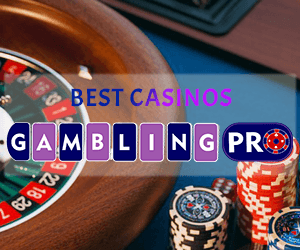Once upon a time, cities tended to treat casinos as if they belonged on the outskirts—almost like they were meant to be kept apart from daily urban routines. Things have changed. Gambling spots now seem pretty entangled with global entertainment vibes, and their influence, which can pop up in all sorts of unexpected places, sometimes lands right in the middle of what gets talked about in the news or in the day-to-day pulse of city life. According to recent reports, you’ll find that city branding these days—maybe to an extent that would have seemed over-the-top a few decades ago—leans into casino-driven developments as if they’re cornerstones of economic plans. The numbers, too, catch your eye: more than $230 billion in gross gambling revenue globally for 2023, and, it appears, much of that buzz draws new capital towards urban centers.
Urban development and economic drivers
When you look at how downtowns revamp themselves, it’s hard not to notice that casino complexes keep cropping up right where the action is supposed to be. Over the last ten years or so, city officials have promoted these big, mixed-use developments, with casinos pitched as key drivers for jobs or even full-on urban makeovers. There’s some data indicating that, in places like Singapore and various metro areas in the U.S., hospitality jobs increased—sometimes by around 18 percent annually after these massive resorts opened. Not just gaming floors, either—think hotels, shiny malls, even improved public transport and utility upgrades trailing along after the bulldozers.
Does it always deliver? That’s still up for debate. Properties that were heading for decline, more often than not, bounce back for a while—rising property values, more boutiques opening, that kind of thing. Still, not all experts are convinced this type of rebound sticks in the long term.
Digital shift and media narratives
The rise of online and land-based casino platforms is rewriting the rules for urban content and coverage alike. So, as regulatory walls start to crumble a bit, news organizations seem to be broadening their focus; it’s not only about economic forecasts anymore. Now, there’s more interest in how virtual gambling seeps into daily city routines—it’s not just outcomes in cash, but how city life feels different when betting goes digital. The whole COVID-19 situation certainly gave this a push: participation in online gaming jumped by 20 percent in 2022 (Statista tracked this), so clearly something’s shifting both in terms of intrigue and the types of risks people and policymakers are calculating.
And then, media attention—if you watch closely—seems to swirl around these casino-themed events: food festivals, those glitzy brand launches… sometimes it’s hard to tell where gambling ends and lifestyle branding begins. The stories anymore? They’re frequently about regulation, about consumer protections, or about how officials try to keep the revenue machine humming without risking a spike in gambling-related harm. Oversight, especially as online options multiply, never feels quite enough for everyone’s comfort. Art shows, gourmet pop-ups, and celeb-hosted happenings now often get covered for how they intersect with digital gaming culture, making journalists twist their usual narrative threads or even rethink which events deserve a headline.
Entertainment, fashion, and nightlife
Entertainment districts clustered around casinos have managed to shift expectations—maybe even the base rhythm—of nightlife in some cities. Instead of the old model, where theaters or sports bars dominated, now you’re likely to stumble across high-wattage concerts or unexpected art installations just steps away from the tables. Some urban culture reports point out that it’s not rare anymore to see a week where a superstar concert, a championship bout, and an experimental art fest all orbit the same casino. For cities desperate to stand out, these gatherings might be shaping the very image (or at least the media image) of what qualifies as cool or noteworthy downtown.
What’s also striking: culinary and shopping trends seem to bubble up around these hotspots and then slosh over into neighboring streets. It’s not just fancy food and drinks (though there’s plenty of that); those luxury boutiques and LED-lit cocktail lounges now blend with local neighborhoods, changing up who visits and where the money flows. In recent years, bits of casino design—those flashy surfaces, moody colors, loungey sofas—keep popping up in places you wouldn’t expect.
Social debates and the limits of growth
Flashes of economic optimism aside, casino-centric development is rarely simple. For every statistic showing job gains, there’s an opposing headline about social fallout. Some news organizations, looking at the numbers, find evidence that gambling problems tick up (sometimes noticeably—Nature cites rates that hit 45 percent in certain host cities). So the tension never really disappears: city leaders may hail new revenue but face hard questions about what’s being lost along the way.
Coverage tends to circle around the same issues: have regulators done enough, or are addiction support systems patchy at best? To be fair, casino dollars can help finance roads, parks, maybe even schools… but the trade-off—social impacts—remains endlessly debated. Another wrinkle: how digital and in-person gambling now blend together, making rules harder to write (or, frankly, to enforce). And as cities and media outfits continue picking through evidence, the basic question—how much casino culture makes sense—never really gets put to bed.
Conclusion about responsible gambling
Yes, casino culture does appear to spark growth and fresh energy—up to a point. Still, there’s a growing sense among public health advocates, and even some city officials, that unchecked expansion carries risks that are tough to manage after the fact. A few experts recommend steady investment in addiction prevention, plus more sunlight on advertising and meaningful consumer safeguards—not just gestures. While there’s agreement that city leaders and reporters need to keep watch, no one claims the balance is settled. Leaning into clear regulations, better public outreach, and actually available support services seems, for now anyway, to help cities keep pace with new gambling trends.






